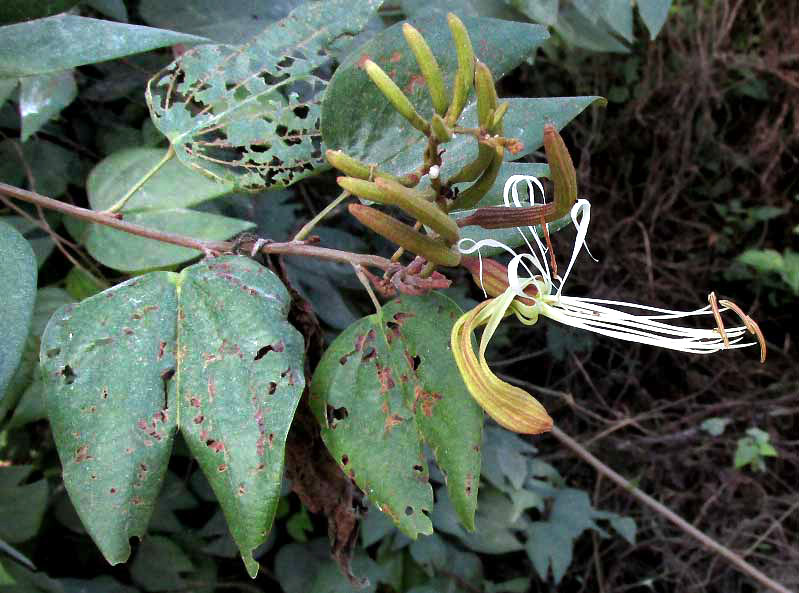Excerpts from Jim Conrad's
Naturalist Newsletter

from the January 17, 2016 Newsletter issued from Hacienda Chichen Resort beside Chichén Itzá Ruins, central Yucatán, MÉXICO
"COWFOOT"
In our area one of the easiest kinds of tree to identify is the one shown above.
The unusual leaves, shaped like the prints of cow hoofs, are distinctive. If you recognize the flowers as those of the Bean Family, or Fabaceae, the hoof shape is even more surprising and diagnostic because the vast majority of Bean Family species produce compound leaves consisting of two to many leaflets, not just one blade with a notch in it, like these.
The hoof-shaped leaves tell us that we have a member of the genus Bauhinia, of which several species are listed for the Yucatan. We've already looked at the most commonly encountered species, Bauhinia divaricata, which is practically a roadside weed, shown with its white flowers and hoof-shaped leaves at www.backyardnature.net/yucatan/bauhinia.htm.
Back in Querétaro we saw another Bauhinia, one from southern Asia planted throughout the world's tropics for its pretty flowers, which you can compare www.backyardnature.net/mexnat/bauhin-1.htm.
Our present species is BAUHINIA UNGULATA, also fairly common in our area, but not as weedy or bushy as Bauhinia divaricata. Neither species has a good English name but in Spanish both are called Pata de Vaca, or Cowfoot. Our present Bauhinia ungulata is generally distributed throughout tropical America. Most trees I see are about eight feet tall (2.5m). The binomial, Bauhinia ungulata, was first published by Linneaus himself back in 1753, in his historic Species Plantarum.
The online Atlas de las Plantas de la Medicina Tradicional Mexicana reports that in central Mexico a tea is brewed from the tree's roots to deal with diarrhea, and also the species is used against intestinal worms and as a purgative.